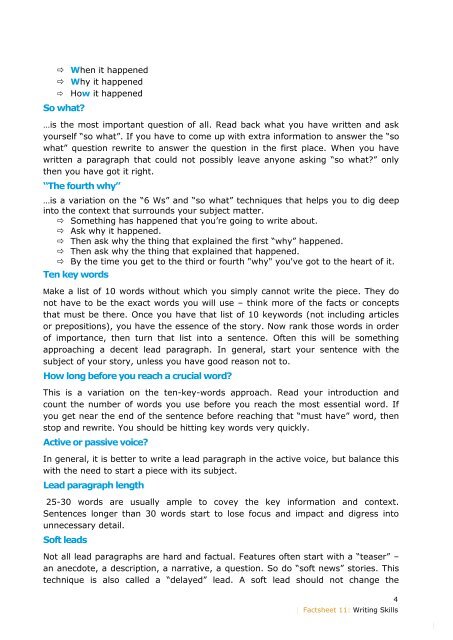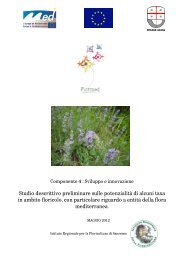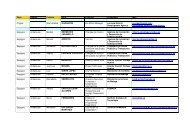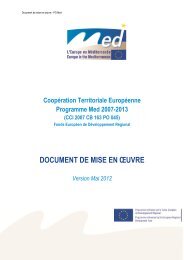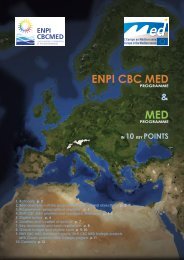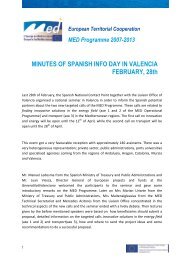MED Communication Handbook - Programme Med
MED Communication Handbook - Programme Med
MED Communication Handbook - Programme Med
You also want an ePaper? Increase the reach of your titles
YUMPU automatically turns print PDFs into web optimized ePapers that Google loves.
� When it happened<br />
� Why it happened<br />
� How it happened<br />
So what?<br />
…is the most important question of all. Read back what you have written and ask<br />
yourself “so what”. If you have to come up with extra information to answer the “so<br />
what” question rewrite to answer the question in the first place. When you have<br />
written a paragraph that could not possibly leave anyone asking “so what?” only<br />
then you have got it right.<br />
“The fourth why”<br />
…is a variation on the “6 Ws” and “so what” techniques that helps you to dig deep<br />
into the context that surrounds your subject matter.<br />
� Something has happened that you’re going to write about.<br />
� Ask why it happened.<br />
� Then ask why the thing that explained the first “why” happened.<br />
� Then ask why the thing that explained that happened.<br />
� By the time you get to the third or fourth "why" you've got to the heart of it.<br />
Ten key words<br />
Make a list of 10 words without which you simply cannot write the piece. They do<br />
not have to be the exact words you will use – think more of the facts or concepts<br />
that must be there. Once you have that list of 10 keywords (not including articles<br />
or prepositions), you have the essence of the story. Now rank those words in order<br />
of importance, then turn that list into a sentence. Often this will be something<br />
approaching a decent lead paragraph. In general, start your sentence with the<br />
subject of your story, unless you have good reason not to.<br />
How long before you reach a crucial word?<br />
This is a variation on the ten-key-words approach. Read your introduction and<br />
count the number of words you use before you reach the most essential word. If<br />
you get near the end of the sentence before reaching that “must have” word, then<br />
stop and rewrite. You should be hitting key words very quickly.<br />
Active or passive voice?<br />
In general, it is better to write a lead paragraph in the active voice, but balance this<br />
with the need to start a piece with its subject.<br />
Lead paragraph length<br />
25-30 words are usually ample to covey the key information and context.<br />
Sentences longer than 30 words start to lose focus and impact and digress into<br />
unnecessary detail.<br />
Soft leads<br />
Not all lead paragraphs are hard and factual. Features often start with a “teaser” –<br />
an anecdote, a description, a narrative, a question. So do “soft news” stories. This<br />
technique is also called a “delayed” lead. A soft lead should not change the<br />
4<br />
� Factsheet 11: Writing Skills<br />
�


